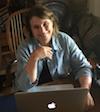Please complete your formal training to unlock the ability to create GLOBE Blogs.
See Training > User Roadmaps in the site navigation to learn more.
Cases of mosquito-borne disease are increasing in the United States. Because these diseases are directly correlated with the abundance of mosquitoes, finding what environmental variables impact mosquito populations is essential to prevent the transmission of disease. For the SEES 2020 Mosquito Mapper research project, our group decided to focus on identifying the statistical correlations...

Through my research, I tried to find a connection between plants and mosquitoes, so that humans can find a safe, natural, and aesthetically pleasing way to deter these disease vectors. I began my search for answers by visiting nature preserves in my area to sample water, set mosquito traps, and take pictures of the plants. I also used the GLOBE Observer Mosquito Habitat Mapper data from the...

Hi everyone, my name is Bhaskar J, and I'm interning with the SEES Mosquito Mappers research team this summer, in which we use the GLOBE Observer citizen science app. There are a lot of moving parts to it, but overall it's been an incredible experience! One part of the program is catching mosquito larvae in our home-made traps. See the attached images showing how I made mine! Figure....

To draw statistically valid conclusions about ecological trends, such as the relationship between land cover and mosquito population dynamics, land areas of interest must be sampled in a consistent manner. Numerous ground observations of local areas can help scientists gain insight of the landscape, especially in regions where remote sensing techniques fail to measure certain land...

Coming into the NASA SEES Mosquito Mapper program, I was beyond nervous. Living in Washington State in an area with few mosquitoes, I had no idea how I would be able to collect enough data for the final research project, especially since this was the first time I was conducting research on my own. In addition to that, the program was entirely virtual! As a visual learner, I was worried that...
Showing 91 to 95 of 120 entries.